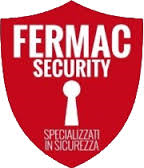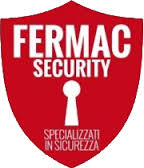You may need to look in a state outside of your current state of residence; however, the benefit of a sober living house can outweigh the inconveniences, because you can significantly improve your odds of staying drug-free. The interactions in sober living houses become opportunities for people in recovery to build new decision-making and problem-solving skills that can be used in their lives outside of the house. Halfway houses typically have a specific time limit for the duration of stay and often require residents to either be currently attending a treatment program or have recently completed one. Sober living homes are populated by a community of individuals actively in recovery and committed to maintaining abstinence from drugs and alcohol. They offer a valuable peer-support network comprising people with similar experiences and shared goals.
Men’s Sober Living Houses in Connecticut and Ohio
One study of 330 residents at 49 sober living homes in California found that residents had increased odds of total abstinence and employment. The same research also identified operational characteristics that improved the success rate of sober houses. This included the facility’s location and whether residents must be sober for at least 30 days before admittance. Other substance misuse treatment approaches comparable to a sober living house are day treatment programs, partial hospitalization programs, and intensive outpatient programs. In these types of treatment settings, the individual will leave their environment during the weekdays, receive hours of formal treatment, and return home during the evenings and weekends. These programs can provide effective treatment, but they can leave the individual vulnerable to cravings and triggers for substance use during off hours.
Substance use treatment providers may offer oversight in some instances, although this is not always the case. Some sober living facilities provide substance-free transitional housing for only men or only women, meaning men live with men and women live with women. We were founded jointly by Vanderburgh House, an operator of sober houses in Massachusetts, and Vanderburgh Communities, an organization supporting sober living and recovery home operators.
What is the process for entering a sober living program?
While living in a recovery residence, individuals are encouraged to find work, study, or participate in volunteer opportunities. This enables residents to accept responsibility for themselves and their future and establish a daily routine and purpose. Life skills training is often implemented and includes how to manage money, time, motivation, relationships, stress, and other factors more effectively. These skills will enable someone to function well in society when they leave the facility.
Understand Your Sober Living Options
Call or verify your insurance to see if your plan will cover the costs of addiction treatment. Some sober living homes allow residents to stay for an indefinite period, while others impose restrictions on the duration of their stay. As these homes do not provide formal addiction treatment, they are not subject to monitoring by state licensing agencies. However, they often participate in coalitions or associations that establish guidelines for health, safety, quality, and adherence to a model that emphasizes involvement in 12-step group involvement. Sober living near me supports those who have completed inpatient addiction treatment or a rehab program, with women’s sober living homes helping transition to a normal life.
Department of Housing’s Recovery Housing Program provides eligible individuals in recovery from substance use disorder with stable, transitional housing for up to 2 years. As previously mentioned, returning to a supportive and encouraging home environment may be the best place to help you maintain your abstinence and continue to develop your coping skills. Prices vary, but most of the time it costs about the same as it would cost to live in a modest apartment or home. Residents must pay rent on time, but they do not have to pay first and last month’s rent. A strong support system such as friends and family members can help individuals maintain accountability and stay focused on their recovery goals. To learn more about rehab programs and treatment options, contact a caring admissions navigator with American Addiction Centers (AAC) free at .
Finding Sober Living Homes Near You
- This effect can cause ongoing problems and make someone reluctant to return home after addiction treatment.
- This included the facility’s location and whether residents must be sober for at least 30 days before admittance.
- There are several factors that you should consider before deciding where to live after completing a treatment program for a substance use disorder.
- It is a way of life that has a strong emphasis on sobriety, self-discipline, and healthy habits.
- Admissions navigators are available 24/7 at these treatment centers and all AAC facilities to answer any questions about sober living, verifying insurance benefits, or other addiction recovery needs.
Sober living houses and halfway houses are often used interchangeably as they both provide a substance-free living environment for those suffering from addiction. Differences between the two can stem from funding, length of stay, and requirements to apply to live there. Sober living homes typically do not limit the length of stay and may not require previous attendance in a formal addiction treatment program. Halfway houses, on the other hand, typically have a time limit and require residents to either be attending a treatment program or have recently completed sober house one. Sober House Directory helps you find sober houses, structured group homes, and sober living.
For people currently in a treatment program, coordination with the current care team to establish an aftercare plan can make the transition to sober living much smoother. With professional connections between treatment programs and aftercare housing, patients can ensure they do not lose time transitioning between levels of care. Many sober living homes are not government-funded and are self-supporting or operated by charities or addiction treatment centers. Some recovery houses accept donations of clothing, household goods, and other items for use by residents or to sell to make money to offset the facility’s costs.
- All sober living homes have a zero-tolerance policy regarding the use of drugs or alcohol.
- Sober living homes are group homes for those recovering from drug or alcohol addiction.
- A sober living home or sober living facility helps individuals recovering from drug or alcohol addiction with structured house rules.
- The costs of residing at a SLH are primarily covered by resident fees, and vary based on aspects such as amenities and geographic location.
- Department of Housing’s Recovery Housing Program provides eligible individuals in recovery from substance use disorder with stable, transitional housing for up to 2 years.
Sober living facilities offer beneficial environments with access to recovery support meetings, vital amenities, and a range of services to support residents in their recovery journey. It serves as a stepping stone between inpatient treatment or intensive outpatient programs and the return to independent living after completing alcohol rehab treatment. Sober living also acts as a bridge for those transitioning from a formal treatment program, offering peer support and a stable environment. Drug abuse and alcohol abuse are common issues addressed within the sober living network, where attending house meetings https://yourhealthmagazine.net/article/addiction/sober-houses-rules-that-you-should-follow/ has strongly encouraged attendance. Other sober living homes within this network also support those with mental illness, often in collaboration with the criminal justice system, particularly for those dealing with psychoactive drugs. Sober living homes play a crucial role in the recovery process for individuals overcoming substance use disorders.
Individuals in sober homes share a common goal of long-term sobriety and wellness. Members of the sober living community support and motivate each other to avoid relapsing into past behaviors. However, if your home environment isn’t stable, returning can potentially result in a big setback in your recovery journey. If your home still holds the people and things that trigger your substance use, returning could cause you to relapse.1 Sometimes it helps to separate from the people and places contributing to your addiction.
More modern versions were opened in the 1940s and focused on supporting rehabilitation from substance abuse. These facilities are generally more pleasant and less crowded than halfway houses. Sober living houses are also called sober residences, recovery houses, and recovery residences, among other names. If you are currently in a facility such as these or know where one may be, asking individuals who work for one of these facilities can help point you toward a nearby sober living house.
Our services are always offered free of charge and are accessible to anyone in need of advice or assistance. Whether this is your first experience exploring formal substance use treatment or you are familiar with the process, reaching out by calling our free hotline is the first step toward lifelong recovery. Calls to any general helpline will be answered or returned by one of the treatment providers listed, each of which is a paid advertiser. We understand that coming to a decision about addiction treatment can be confusing, which is why we are here to provide you with all the details, support, and guidance you need to make the right choice – call us today to get started. It can provide opportunities for individuals in recovery to build new relationships, reconnect with loved ones, and build a support system. Organizations that offer a feeling of community and connection, like Alcoholics Anonymous and Narcotics Anonymous, can help people in recovery remain inspired and dedicated to their sobriety.


